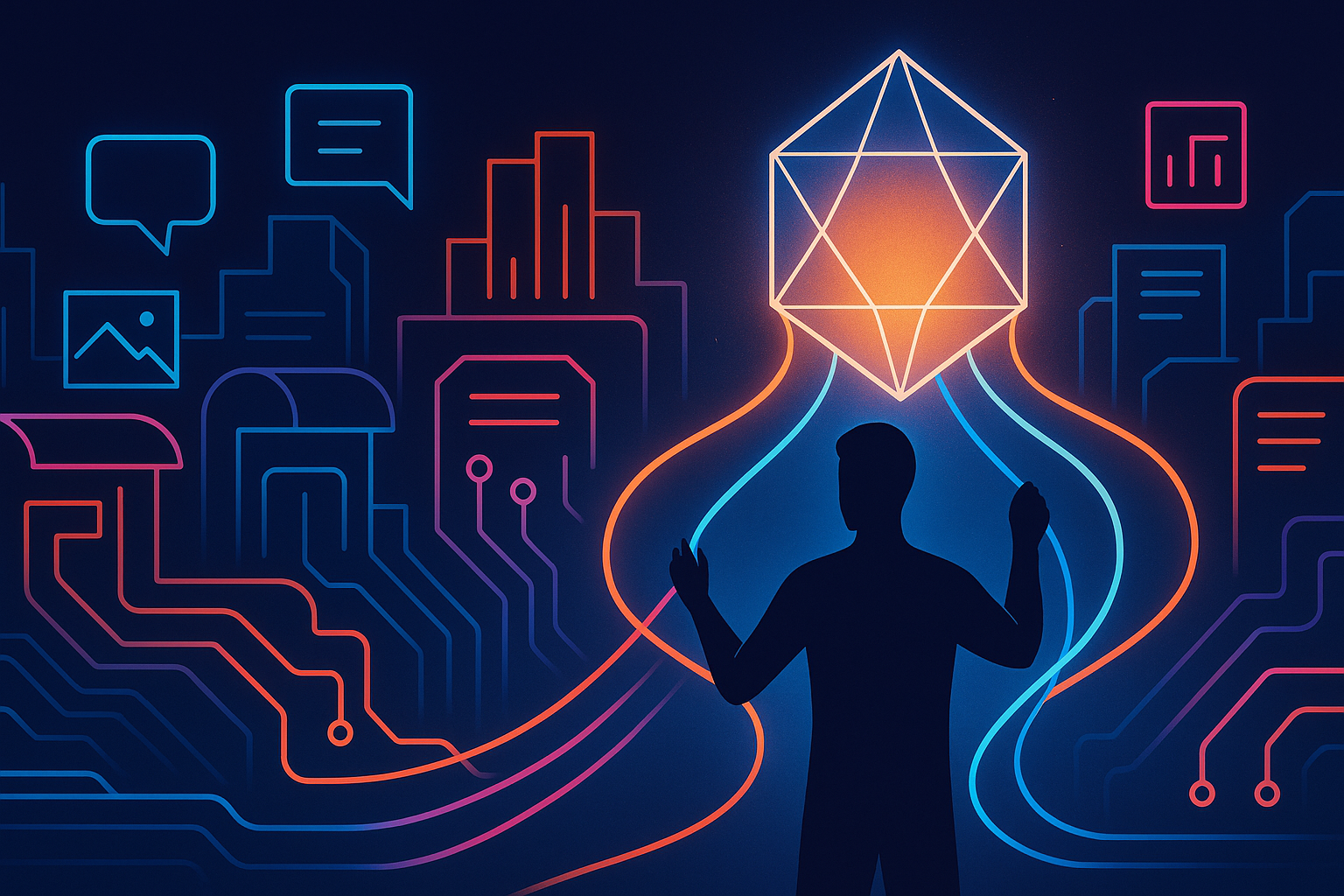Scot Secure West 2025

I am presenting at the Scot Secure West Conference in Glasgow. Titled "AI and Its Integration Problem". I have attached the slides from the conference here as well as a blog post accompanying the conference talk.
AI and Its Integration Problem: Why I Built My Own
Think about the last time you tried to wrangle half a dozen AI tools into helping with one task. Maybe you were summarising a meeting, planning a project, or just trying to organise your thoughts.
Did you feel like you had a co-pilot at your side? Or did you feel more like a human switchboard operator — copying here, pasting there, translating between a dozen different interfaces that all speak slightly different dialects?
We were promised seamless augmentation. A brilliant partner in the cockpit. Instead, we got a noisy bazaar, each stall shouting about its miracle cure.
That gap — between AI’s promise and our frustrating daily reality — isn’t a failure of AI’s power. It’s a failure of integration.
From Chatbots to Engines
Most people still see AI as “that chatbot I ask questions to.” Useful, yes — but shallow.
What happens if we shift perspective? Stop treating it as a shiny toy and instead see it as a powerful engine we can direct and build with.
Waiting for a mythical “all-in-one AI app” is the wrong path. That would be a one-size-fits-none solution, forcing us to bend to the software instead of the software adapting to us.
The future is smaller, more creative, and radically personal. Not finding the perfect tool — becoming the architect of your own.
The Integration Gap
Right now, AI feels like walking into a noisy arcade.
- Over here: a tool that writes brilliant marketing copy.
- Over there: one that analyses spreadsheets.
- In the corner: an image generator.
Each one is brilliant in its lane, but they don’t talk to each other. Which leaves us — the humans — as the messy plumbing holding it all together.
Even in cybersecurity, the problem is obvious. AI-driven security products can surface meaningful signals, cut through noise, and even draft incident reports. But they’re still “AI in a box.” Useful within their boundaries, but blind to your broader workflow.
Vendor integration, not your integration.
Building for Yourself
So how do you escape that trap? You build.
Not massive enterprise systems. Small, elegant workflows that fit the way you work.
For me, one of the most valuable is what I call Content Distillation:
- Extract Wisdom – detailed, high-value notes.
- Summarise – an hour boiled down to a paragraph.
- Provide Timestamps – exact moments worth watching.
That Markdown file lands in my Obsidian knowledge base. What used to take an hour now takes two minutes.
That’s the shift: AI not as a flashy app, but as an extension of your own thinking.
From Workflows to Agents
Workflows are powerful, but the next step is Agentic AI — giving AI not just tasks, but jobs.
That’s where my prototype, Nomad, comes in. Think of it as my own small-scale intelligence agency:
- RSS Agent – ingests high-credibility threat feeds and vulnerability databases.
- Social Media Agent – scans forums, Reddit, and Twitter/X for early chatter.
- GitHub Agent – watches for proof-of-concept exploits.
At the centre sits the Orchestrator Agent — the analyst-in-chief. It cross-references signals, connects the dots, and produces a concise briefing, with me kept firmly in the loop.
This is where AI stops being clever autocomplete and starts being an actual collaborator.
Getting Started
You don’t need to build Nomad tomorrow. Start with something small: one repetitive, annoying task in your day.
- Draft a simple prompt.
- Give it context.
- Then ask the AI: “How could I make this better?”
It will literally teach you how to talk to it. The trick is to treat AI less like a black box and more like the smartest trainee you’ve ever met. It won’t read your mind. But if you give it background, goals, and direction, it will surprise you.
Closing the Gap
The age of AI isn’t about passively using whatever vendors hand us. It’s about stepping into the role of architect. Seeing AI not as fixed apps, but as flexible building blocks for our own ingenuity.
The integration problem is real — but the solution is personal, creative, and deeply human.
So I’ll leave you with the same question I asked myself:
What will you build?
